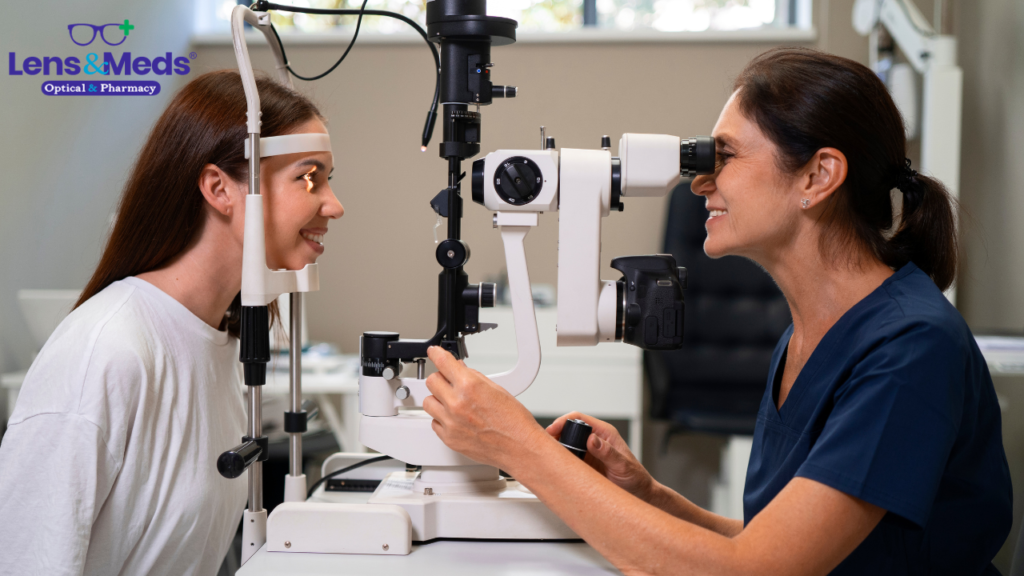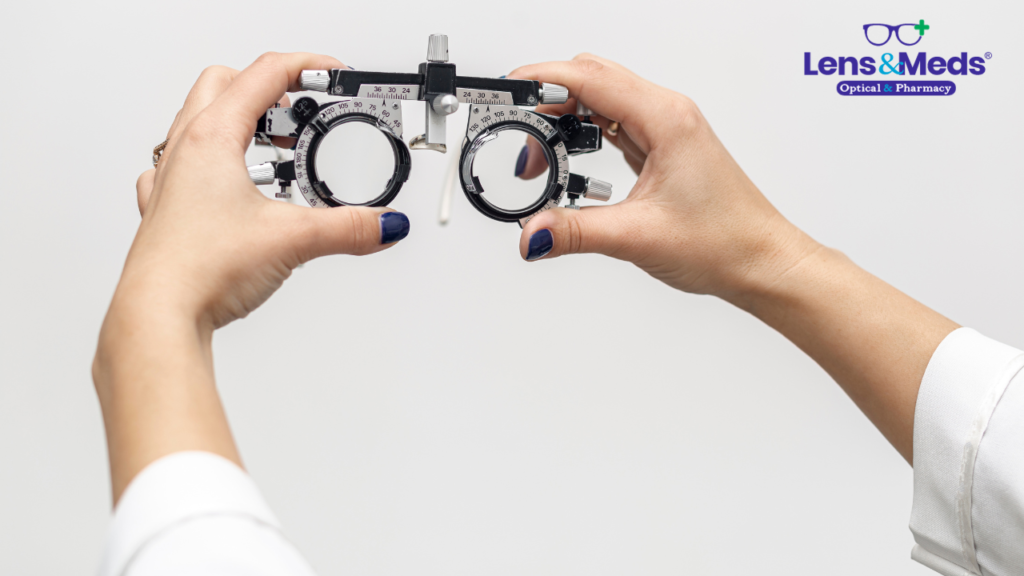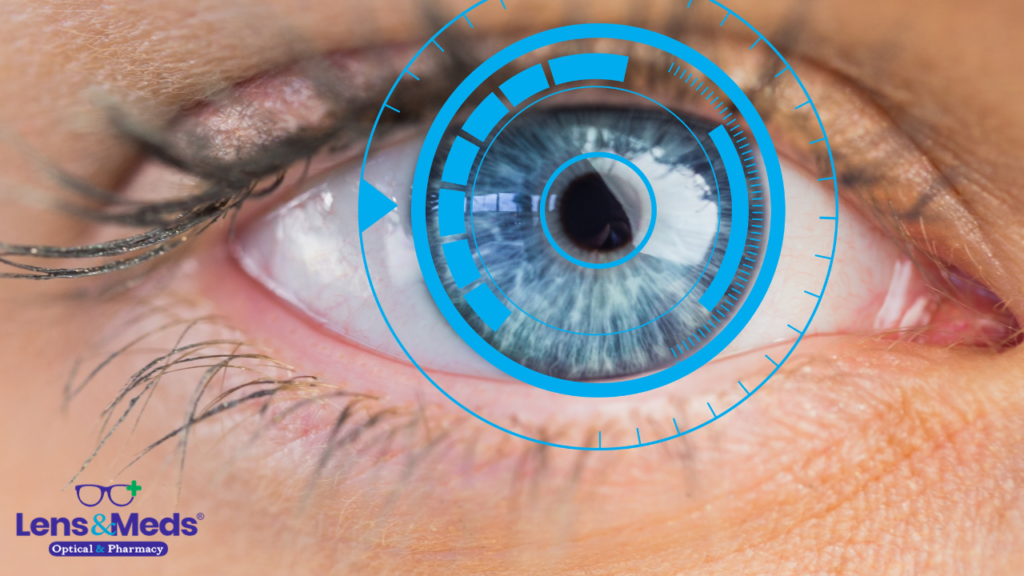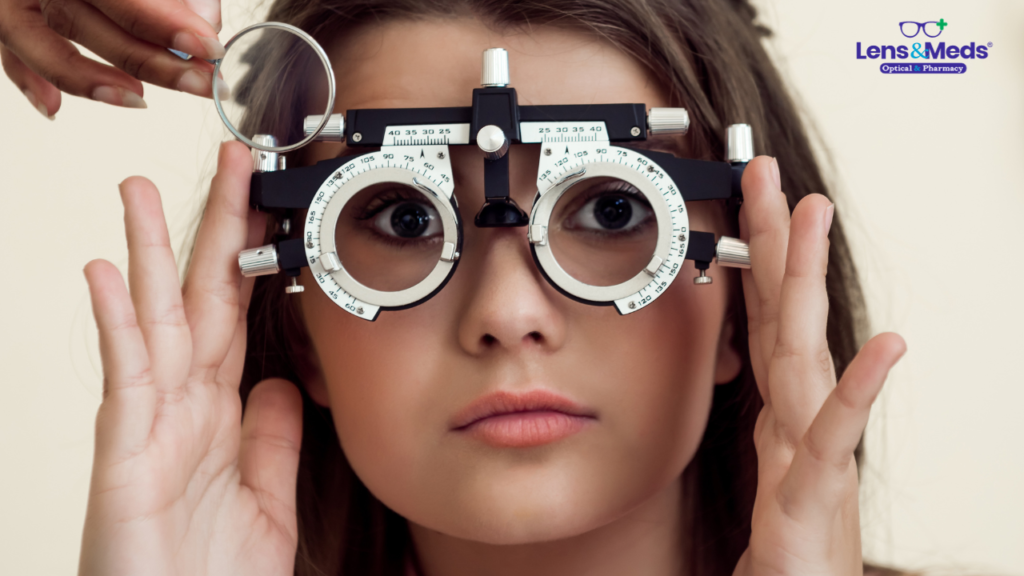In the ever-evolving landscape of healthcare, Advanced in eye care stands at the forefront of innovation. Technological breakthroughs have revolutionized the way we address visual impairments, offering a spectrum of solutions to enhance and preserve our precious gift of sight. From groundbreaking surgeries like LASIK to the intricate world of intraocular lenses (IOLs) and the continuous evolution of contact lenses, the field of eye care has witnessed remarkable strides. In this comprehensive exploration, we will delve into the latest advancements in eye care technology, shedding light on transformative procedures and cutting-edge devices that are reshaping the way we approach vision correction.

Unveiling the World of Intraocular Lenses (IOLs) and Advanced in Eye Care
Understanding the Basics
Let’s start our journey with a closer look at intraocular lenses (IOLs), a remarkable innovation that has transformed the landscape of eye surgery. An IOL is a synthetic lens implanted within the eye to replace the natural lens, which may be clouded by cataracts or require correction for refractive errors.

Types of IOLs
Monofocal Lenses:
One of the fundamental types, monofocal lenses correct vision at a single distance, providing clarity either for near or distant objects. These lenses have long been a cornerstone in cataract surgery, offering a reliable solution for patients seeking improved vision.
Multifocal Lenses:
In contrast, multifocal lenses aim to address both near and distant vision, reducing the dependence on glasses after surgery. These lenses utilize advanced optics to allow individuals to enjoy a broader range of clear vision.
Toric Lenses:
For those with astigmatism, toric lenses offer a tailored solution. Astigmatism occurs when the cornea has an irregular shape, causing blurred vision. Toric IOLs counteract this irregularity, providing enhanced visual acuity.
Presbyopia-Correcting Lenses:
As we age, presbyopia often sets in, making it challenging to focus on close objects. Presbyopia-correcting lenses within IOLs address this issue, enabling individuals to maintain better near vision without the constant need for reading glasses.

Exploring Surgical Options Advanced in Eye Care
Eye Lens Surgery:
The surgical process of implanting IOLs, often referred to as eye lens surgery, has become a routine and highly successful procedure. Advancements in surgical techniques, such as smaller incisions and improved precision, contribute to faster recovery times and enhanced outcomes.
Cost Considerations:
While the benefits of IOLs are substantial, understanding the costs associated with intraocular lens surgery is crucial. Factors such as the type of lens chosen, surgical facility fees, and the surgeon’s expertise contribute to the overall cost. Exploring these elements helps patients make informed decisions regarding their eye health.

LASIK Surgery: Transformative Vision Correction are Advanced in Eye Care
The Essence of LASIK
Moving beyond intraocular lenses, LASIK (Laser-Assisted In Situ Keratomileusis) surgery has become a household name in the realm of vision correction. LASIK is a refractive surgery that reshapes the cornea to correct common vision problems such as nearsightedness, farsightedness, and astigmatism.
The LASIK Procedure
The LASIK procedure involves the use of a laser to precisely remove corneal tissue, reshaping the cornea to improve the way light is focused onto the retina. This results in clearer vision without the need for glasses or contact lenses.
Advancements in LASIK Technology
Recent years have seen significant advancements in LASIK technology, with the introduction of bladeless LASIK and wavefront-guided LASIK. Bladeless LASIK replaces the traditional microkeratome blade with a laser, enhancing precision and reducing the risk of complications. Wavefront-guided LASIK utilizes detailed mapping of the eye’s unique imperfections, allowing for a personalized and highly accurate vision correction.

Evolving Landscape of Contact Lenses
Beyond Glasses: The Contact Lens Revolution
While eyeglasses have long been a staple for vision correction, contact lenses offer a more discreet and versatile alternative. Advancements in contact lens technology have expanded the options available to individuals seeking comfort, convenience, and optimal vision correction.
Types of Contact Lenses
Traditional Soft Lenses:
Soft contact lenses, made from flexible plastic materials, are renowned for their comfort. They conform to the shape of the eye and are available in various wearing schedules, including daily, bi-weekly, and monthly options.
Toric Contact Lenses:
Similar to their IOL counterparts, toric contact lenses address astigmatism, providing stable vision for individuals with corneal irregularities.
Extended Depth of Focus (EDOF) Lenses:
The quest for better multifocal contact lenses led to the development of Extended Depth of Focus lenses. These lenses offer a continuous range of vision, minimizing the need for multiple pairs of glasses.

Beyond the Horizon: Exploring Advanced Diagnostic Technologies(Advanced in Eye Care)
Optical Coherence Tomography (OCT)
In addition to corrective procedures, the diagnostic landscape of eye care has witnessed a revolution with the advent of Optical Coherence Tomography (OCT). This non-invasive imaging technique provides detailed cross-sectional images of the eye, enabling precise diagnosis and monitoring of various ocular conditions.
Applications of OCT
Macula Test:
OCT plays a crucial role in assessing the macula, the central part of the retina responsible for sharp, detailed vision. Macular OCT tests aid in the early detection and management of conditions such as age-related macular degeneration (AMD) and diabetic retinopathy.
Corneal Collagen Cross-Linking:
OCT is instrumental in guiding corneal collagen cross-linking procedures, a treatment for progressive conditions like keratoconus. This technique strengthens the cornea, preventing further deformation and preserving vision.
Comprehensive Eye Check:
OCT has become an integral part of comprehensive eye examinations, offering detailed insights into the structural integrity of the retina, optic nerve, and other critical eye structures.
Ongoing Research and Future Possibilities
As we embrace the current advancements in eye care technology, ongoing research continues to push the boundaries of what is possible. From gene therapies targeting hereditary eye conditions to advancements in regenerative medicine, the future holds exciting possibilities for preserving and restoring vision.

Conclusion
In this exploration of Advanced in eye care technology, we have traversed the realms of intraocular lenses, LASIK surgery, and contact lenses, discovering the transformative impact of these innovations on the world of vision correction. As technology continues to progress, the journey toward clearer, healthier vision becomes more accessible to individuals seeking a brighter future. Whether it’s the precise science of intraocular lenses, the revolutionary LASIK procedure, or the convenience of modern contact lenses, the field of eye care stands as a testament to human ingenuity and the relentless pursuit of a clearer tomorrow.


Leave a Reply